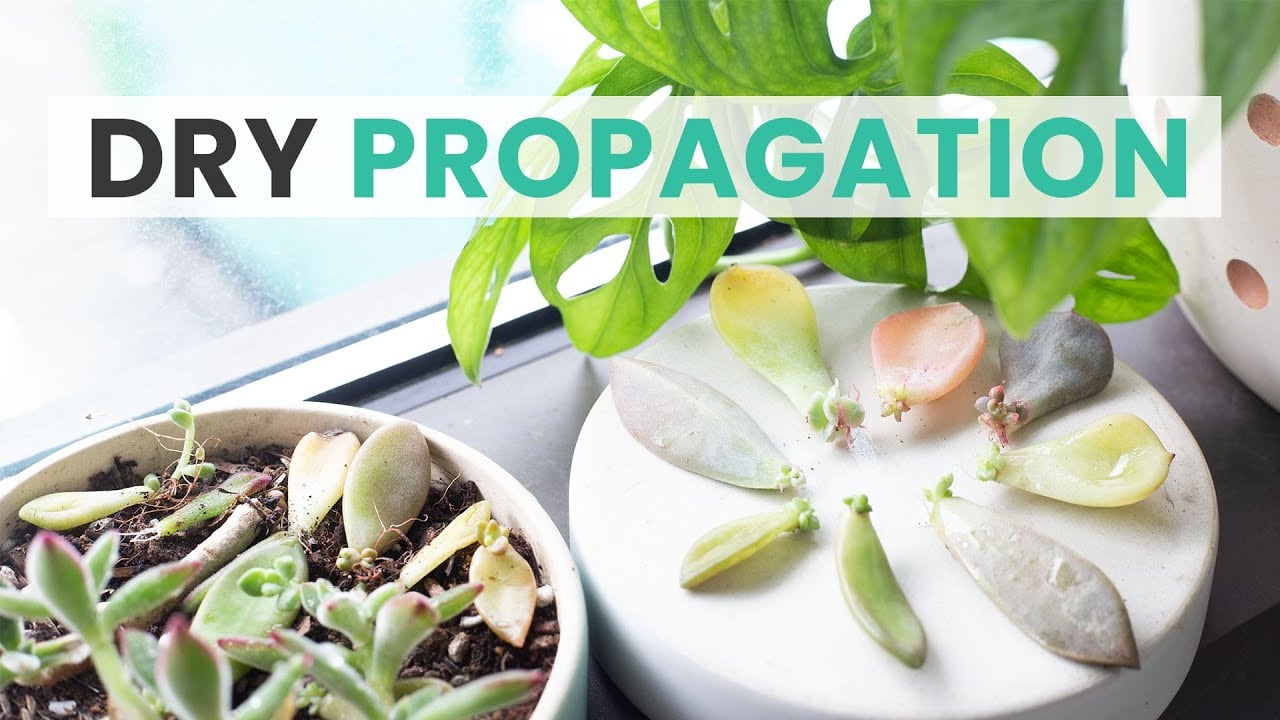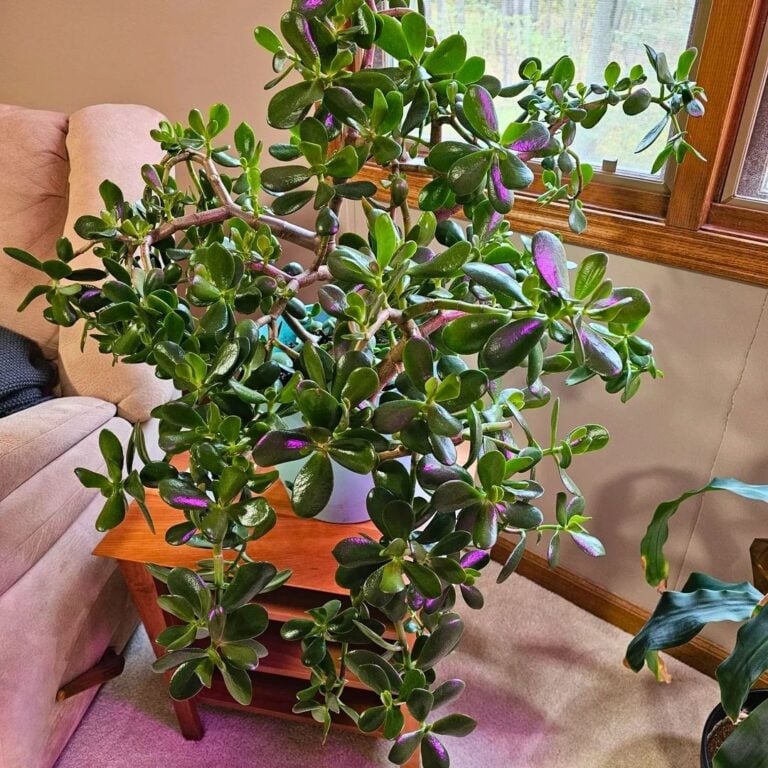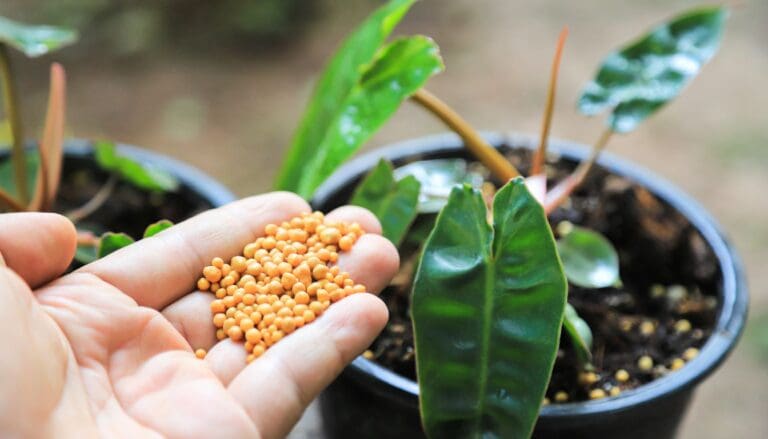4 Ways to Grow New Plants from Leaf Cuttings
I’m always on the lookout for easy ways to fill my home with more plants. Growing new plants from leaf cuttings is honestly a fun, low-stress method that anyone can try.
It’s such a good way to start more plants without buying seeds or spending much. Plus, it’s just satisfying to watch plants grow from scratch.
Please note: Simplify Plants is reader-supported. As an Amazon Associate, I earn from qualifying purchases made by our readers with no extra cost added to you all! Some links in the post are affiliate links and I get a commission from purchases made through links in the post.
1) Succulent leaf propagation by drying the leaf before planting

I like to grow new succulents by using their leaves. It’s simple, honestly, and a little addictive.
First, I gently twist a healthy leaf off the main plant. The leaf needs to come off in one piece—if it tears, it probably won’t root.
After that, I let the leaf dry out for a few days. This lets the cut end heal up, or “callus,” so it won’t rot.
I just leave it somewhere warm and dry, but not in direct sun. Usually, the end forms a thin, tough layer in a couple of days.
Once it’s dry, I lay the leaf right on top of well-draining soil. Don’t bury it—just lay it flat, with the end that was attached to the plant touching the dirt.
I give it a light mist every few days. I try not to overwater, since succulents really hate soggy soil.
After a week or two, tiny roots or even baby plants start popping up. It’s honestly pretty cool every time. I keep misting the soil when it feels dry.
With a little patience, the new plant gets bigger. I wait until it has a few strong roots before moving it to its own pot.
2) African violet leaf cutting in moist soil

Growing new African violets from a single leaf is one of those plant tricks that feels like magic. It doesn’t take much time, and I love watching them grow.
First, I pick a healthy leaf from my African violet. With clean scissors, I snip it off with about an inch of stem left on. That bit of stem helps the roots get going.
I fill a small pot with moist, well-draining soil and poke a little hole for the stem. I push the stem in about halfway, then gently press the soil around it.
Keeping the soil moist—but not soggy—is key. I use a spray bottle to mist it every day so it doesn’t dry out. Too much water and the stem might rot, so I’m careful.
To help the leaf cutting root, I cover the pot with a plastic bag or clear dome. This keeps the humidity high and makes rooting easier.
I set the pot in bright, indirect light. Direct sun is a no-go—it’ll burn the leaf or dry the soil too fast.
After a few weeks, I peek for baby plants at the base of the leaf. Once they have a few leaves of their own, I gently move them into their own pots.
3) Begonia leaf propagation placing leaf sections on damp peat moss
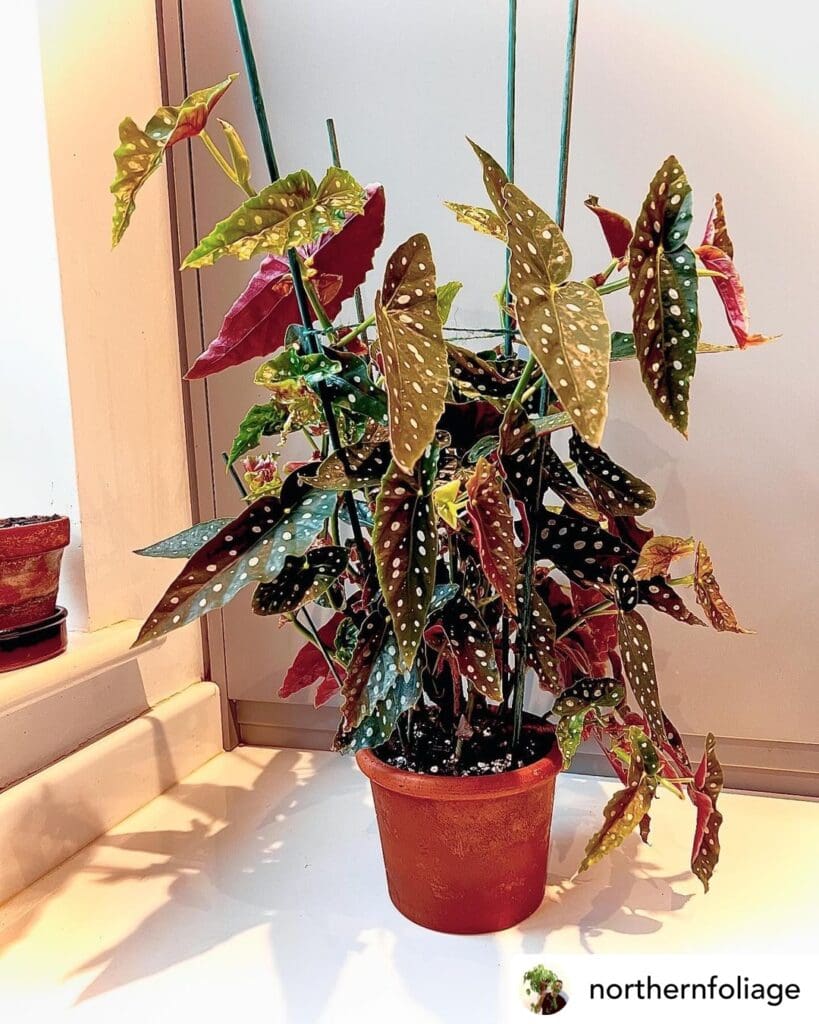
Propagating begonias from leaf cuttings is honestly pretty fun. It’s simple, and you get to watch new life grow from just one leaf.
First, I find a healthy begonia leaf—nothing torn or mushy. I cut it into big sections, making sure each piece has a main vein since that’s where roots and leaves pop out.
I lay the leaf sections flat on moist peat moss. The moss should be damp, not soaked. I press the pieces down, but don’t bury them.
To keep things humid, I cover the tray with a clear plastic lid or bag. That keeps the leaf sections from drying out. I place the tray in a warm spot with bright, indirect light.
A few weeks in, I’ll see little plantlets forming along the veins. When these babies have roots and tiny leaves, I move them into small pots.
This method works for a lot of begonias. It’s easy, doesn’t need fancy gear, and just takes a bit of patience.
4) Snake plant leaf cutting planted in water till roots form

One of the easiest ways I get new snake plants is with leaf cuttings in water. I pick a healthy leaf, cut it into sections about 3-4 inches long, and make sure the bottom of each piece is flat.
I pop the cuttings into a glass of clean water, with the cut end down. Only the bottom part should touch the water. Bright, indirect light seems to work best for me.
I check the water every few days and swap it out if it looks cloudy. Clean water is important for healthy roots.
Usually, roots start forming after a few weeks. If the leaves sit in direct sun, the water gets too hot, so I avoid that.
I watch for any mushy spots and remove them right away. Once there are strong roots, I gently move the cutting into soil.
I water lightly and wait for it to settle in. No fancy tools needed here—watching roots grow in water is actually pretty satisfying.
Common Mistakes When Propagating from Leaf Cuttings
I’ve learned that growing new plants from leaf cuttings is easy, but a few small mistakes can really slow things down. Paying attention to water and picking the right leaf helps a lot.
Overwatering and Underwatering
Overwatering is a classic mistake—it can make leaves rot before they even think about rooting. If cuttings stay wet too long, they get mushy, sometimes smelly. I let the soil dry out a bit between waterings.
But underwatering isn’t great either. If the soil dries out too much, the cuttings might shrivel up. I check the soil every few days and only water if the top feels dry.
Here’s how I keep my leaf cuttings happy:
- I use well-draining soil
- I check moisture levels often
- I water based on what the plant actually needs
It’s all about balance.
Choosing the Wrong Leaf Type
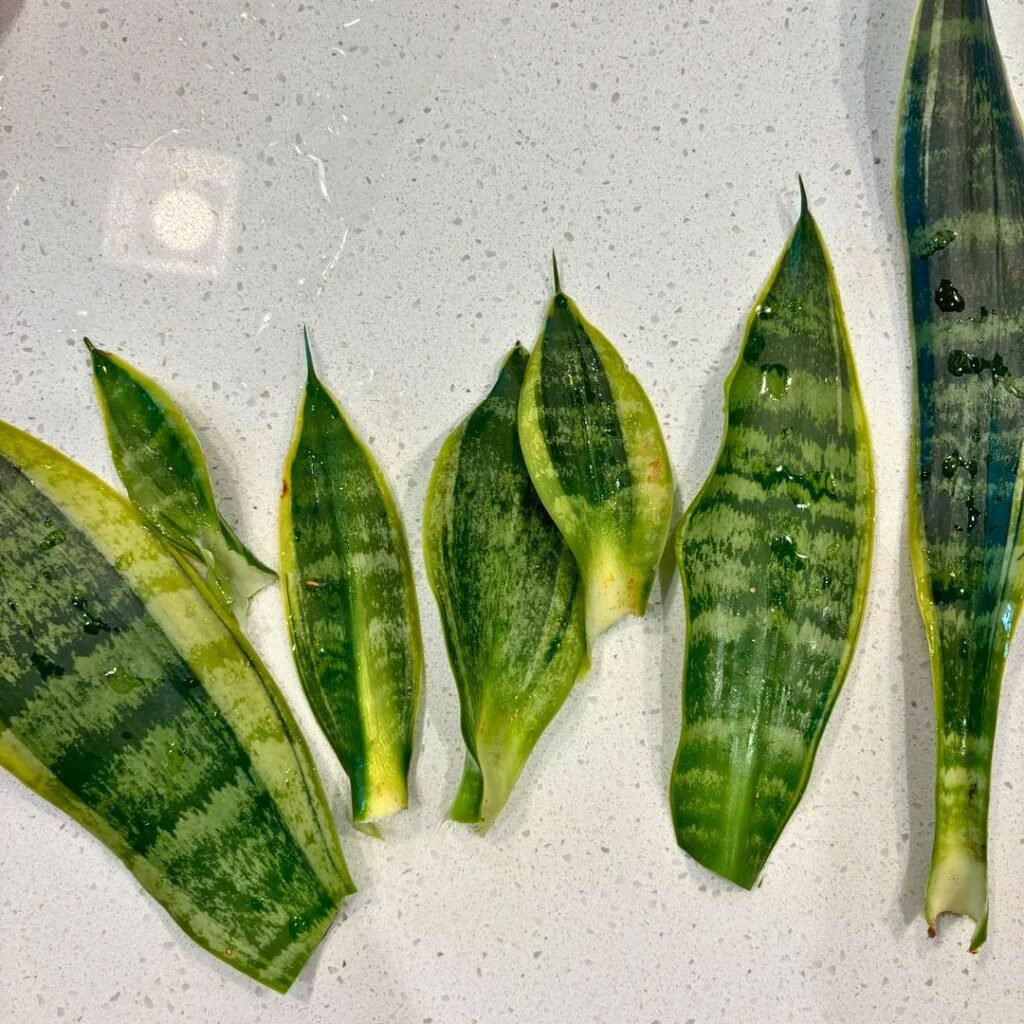
Not every leaf will root—ask me how I know. Old or damaged leaves just won’t grow roots, no matter what. Healthy, mature leaves are my best bet for success.
I pick leaves that look strong and free from spots or tears. Really young leaves dry out too fast, and old ones rot.
Here’s what I do:
- I pick fresh, healthy leaves
- I skip any with signs of disease or pests
- I use a clean, sharp tool to take cuttings
Getting the right leaf makes all the difference.
Caring for Leaf Cuttings After Planting
I pay close attention to my leaf cuttings in the early days. The right care can really help them take off.
The Importance of Humidity and Light
Humidity is huge after planting leaf cuttings. I usually cover the container with a clear bag or dome to trap moisture. This keeps the cuttings hydrated, since they can’t pull up water well until they have roots.
I put them in bright, indirect light. Too much sun burns delicate leaves, but low light just slows things down. I like east-facing windows or a spot a few feet from a bright window.
I open the cover every day to let in some air and avoid mold. If the leaves look soft or wrinkled, I check the soil and add a bit of water if it’s dry.
I never soak the soil—soggy conditions can cause rot. I aim for humidity around 60-80% if I can manage it.
Transplanting Successfully
When I see roots or baby plantlets—usually after a few weeks—I get ready to transplant. I wait until the roots are at least 1-2 inches long and look sturdy.
I gently lift the cutting out with a spoon or something similar. I fill a small pot with loose, well-draining soil and make a hole for the cutting.
I set the cutting in place, cover the roots, and water lightly. I keep the new plant out of direct sun until it’s settled in.
If I see any yellow or soft leaves, I tweak my care a bit. Transplanting is a delicate step, so I try to be gentle and give the plant a good start.
Frequently Asked Questions
I’ve picked up a few tricks for getting the best results when I grow plants from leaf cuttings. Knowing which plants to use, how to prep the cuttings, and what supplies to use really makes a difference.
What are the best types of plants to propagate from leaf cuttings?
I’ve found that succulents, African violets, begonias, and snake plants work well for leaf cuttings. They usually grow new roots and leaves from a healthy, single leaf.
How do you prepare a leaf for successful propagation?
I always use a clean, sharp knife or scissors to cut the leaf. For succulents, I let the leaf dry for a day or two before planting. With African violets and begonias, I stick the cut end right into moist soil or peat moss.
Can you root leaf cuttings in water, and if so, how?
I can root snake plant leaves in water by putting the cut end in a clear cup of water. Only the bottom part sits in water, and I change the water every few days. Once I see roots, I move the cutting into soil.
What are some common mistakes to avoid when propagating plants from leaf cuttings?
I avoid using leaves that are damaged or diseased, and I stay away from soggy soil or direct sun. Too much water or bright sun can really mess things up. Clean tools help stop the spread of germs, too.
How long does it take for new roots to form on leaf cuttings?
For most plants I grow, roots start showing up within 2 to 6 weeks. Some, like succulents, might take longer if it’s cool or if I didn’t let the leaf dry enough.
What kind of soil should I use for planting leaf-cutting propagated plants?
I usually reach for light, well-draining soil when I’m working with cuttings. It just seems to give roots a better start.
If I’m dealing with succulents, honestly, a cactus or succulent mix is my go-to. For African violets or begonias, I lean toward a moist, loose, peat-based soil—it just feels right for helping those delicate new roots stretch out.
Recommended Garden Supplies
| Product Image | Our Recommended Gardening Supplies | Check Offers! |
|---|---|---|
Top Top
Top
Top
Top
Top
Top
Top
Top | rePotme Houseplant and Tropical Classic Potting Soil Mix | Check Offer On Amazon |
 Top
Top
Top
Top
Top
Top
Top
Top | Espoma Organic Indoor Plant Food | Check Offer On Amazon |
 Top
Top
Top
Top
Top
Top
Top
Top | GooingTop LED Grow Light 6000K Full Spectrum Clip Plant Growing Lamp | Check Offer On Amazon |
 Top
Top
Top
Top
Top
Top
Top
Top | Soil Moisture Meter | Check Offer On Amazon |
 Top
Top
Top
Top
Top
Top
Top
Top | Govee Hygrometer Thermometer, Bluetooth Enabled! | Check Offer On Amazon |
 Top
Top | LEVOIT Humidifiers for Large Room(Best For Plants) | Check Offer On Amazon |
 Top
Top
Top
Top
Top
Top
Top
Top | Upgraded DIY Automatic Drip Irrigation Kit, 15 Potted Houseplants Support | Check Offer On Amazon |
 Top
Top
Top
Top
Top
Top
Top
Top | Stainless Steel Heavy Duty Gardening Tool Set | Check Offer On Amazon |
 Top
Top
Top
Top
Top
Top
Top
Top | Bonide Insecticidal Soap | Check Offer On Amazon |
 Top
Top
Top
Top
Top
Top
Top
Top | Bonide 32 oz Spray Neem Oil for Organic Gardening | Check Offer On Amazon |
 Top
Top
Top
Top
Top
Top
Top
Top | Garden Safe Fungicide | Check Offer On Amazon |

